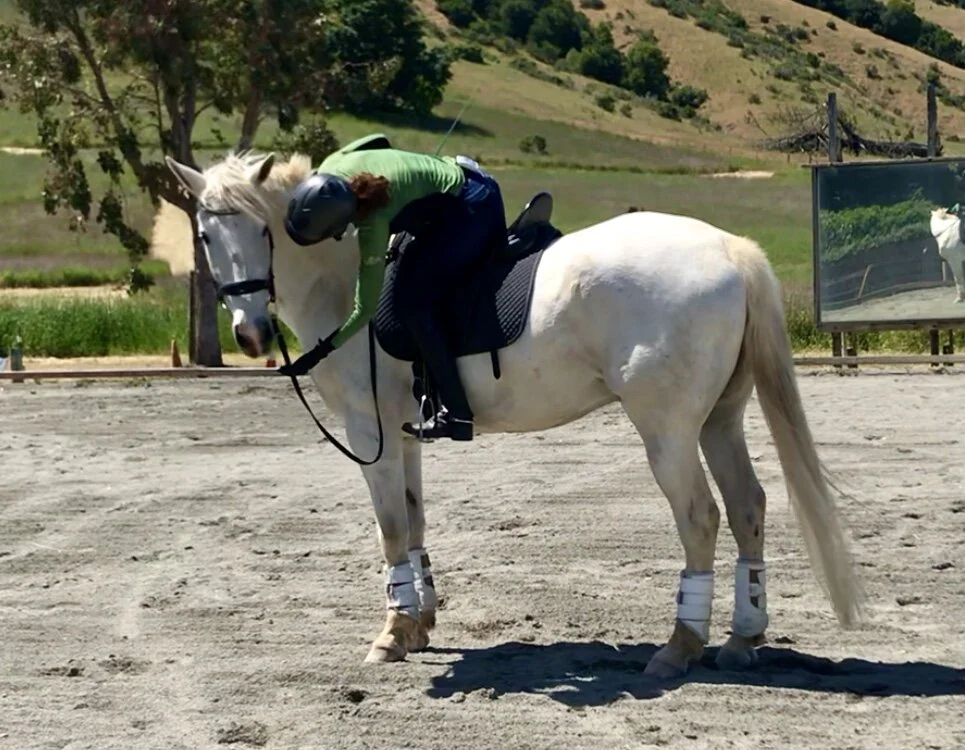The (il-)legitimate Spook
Just a quickie on the subject of spooking because I keep coming across this issue as most of us are or have been working with spooky horses. I feel the need to emphasize this again: every spook is legit from the horse’s point of view.
Some horses take tension to a whole new level, others display their fear more situationally, such as away from home etc. I find that a lot of riders’ patience runs short and sooner or later they distinguish between “legitimate” and apparently “illegitimate” spooks, the latter of which they find to be punishable offenses.
So let’s go back to horse 101: horses are prey animals, flight animals, and herd animals. These basic aspects of horses’ nature must be respected and understood by anyone calling themselves a rider or horse person. Therefore, it is perfectly natural and logical for horses to spook, from their point of you, every spook is legit. It is never, I repeat, never ok to punish a spook, no matter how much you might be over it or don’t “see” the reason for the spook. When I explained this to someone, they asked: So you can’t say “No”?? It’s important to distinguish here between punishment and negative reinforcement. The latter just means you take something away, such as the stronger rein aid that you used to get things under control again (that’s the “no”). The aid is immediately released when the horse is no longer leaving. Then you just go back to work to find relaxation. Remember the training scale with rhythm and relaxation at the core. This is very different from punishment, such as kicking your horse, using your whip in excess or ripping him in the mouth.
Ask yourself how you can engage your horse with what you want him to do in a way that’s safe and interesting to him. Extreme spooking of course has causes, but those must be investigated and addressed through correct and patient training (and in re-training situations this can take even longer…) (see a bit about this in You can’t force the kitty to purr and Missed Opportunities ) and ruling out any health concerns such as pain issues, ulcers, or vision problems etc.. Dr. Britta Schöffmann’s series “How horses learn the rider’s aids” is an excellent place to start if you need inspiration.
So yes, I feel for you if you have one of those very tense horses, but adding punishment just creates more tension and distrust, neither of which will help you or the horse. And no, drugging or draw reins are not an acceptable answer either.
Photo: This wonderful and athletic OTTB is working on overcoming his fear and tension issues and just had a moment in which his instincts took over. Overall he is coming along great and is a joy to work with.





